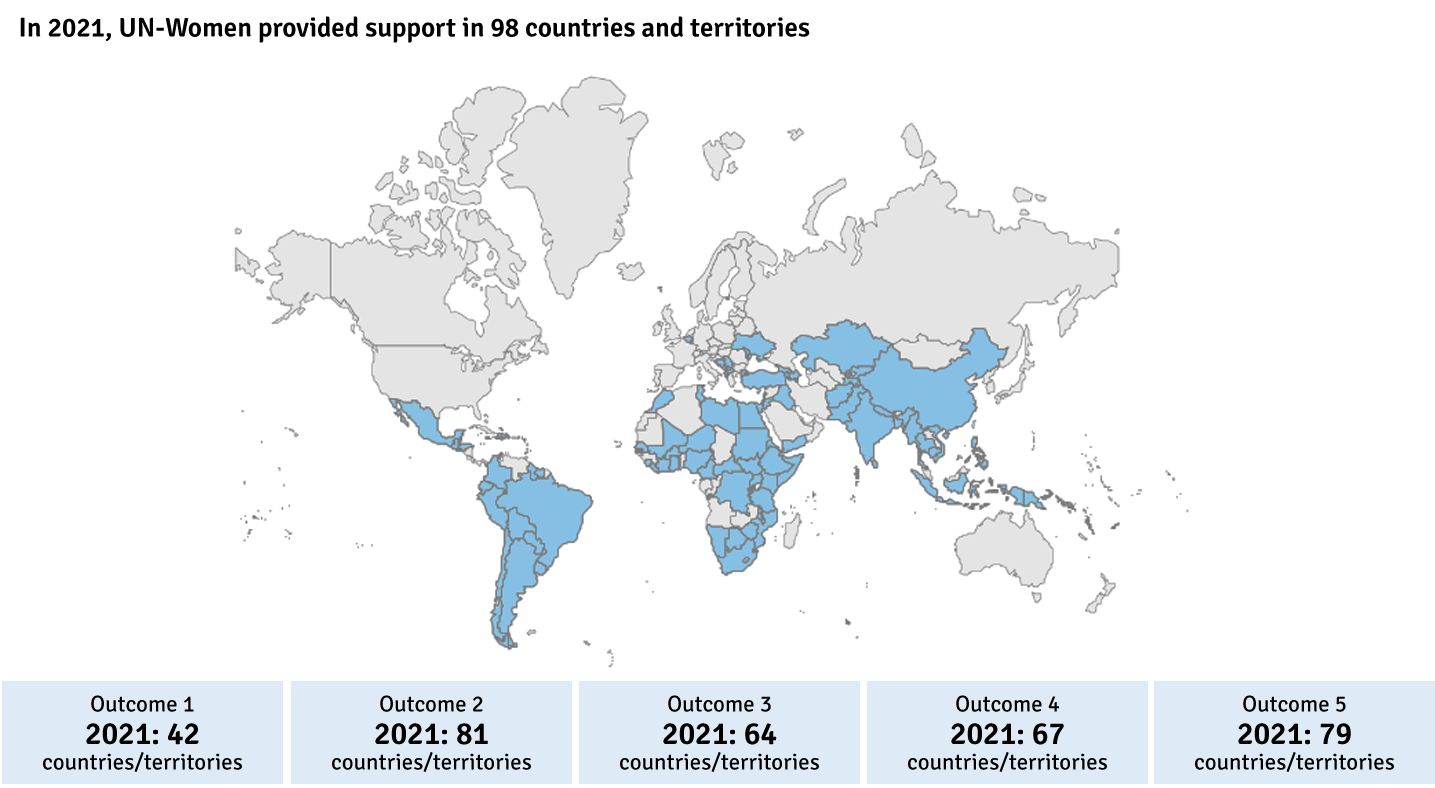All Impact Indicators
Impact Indicator 1
Impact Indicator 2
Impact Indicator 3
Impact Indicator 4
Impact Indicator 5
Footnotes
All references to Kosovo shall be understood to be in the context of Security Council Resolution 1244 (1999).
"^" - Please note that this indicator has undergone some revisions. To understand further, please access the itemized revisions in the IRRF versions available on this portal’s homepage
Impact indicator 1: Source: IPU Parline database on national parliaments https://data.ipu.org and https://unstats.un.org/sdgs/indicators/database/
Source IPU data as of 1 January 2022 https://data.ipu.org/women-averages?month=1&year=2022Back
Impact Indicator 2: This data refers to “Proportion of population below the international poverty line of US$ 1.90 per day”. Adults refer to persons aged 25 and above; youth refers to those between 15 and 24 inclusive.
Total result for 2019 refers to 2015 (source: Global SDG Indicators Database).
Total result for 2020 refers to 2017 (source: World Bank Development Indicators Database).
No new disaggregated data available in 2020 (source: Global SDG Indicators Database).
Total result for 2021 refers to 2019. Data was retrieved on 2 February 2022 from the Un Statistical Division SDGs Indicators' Database (https://unstats.un.org/sdgs/indicators/database/), and is a revised figure for 2019
This indicator has disaggregation, including by sex, in support of efforts to “leave no-one behind”. Please see further information on the Global Overview page.Back
Impact Indicator 3: This data refers to “Proportion of ever-partnered women and girls aged 15-49 years subjected to physical or sexual violence by a current or former intimate partner in the previous 12 months”
The 2019 result was based on data available at time of results publication for the year range 2005-2017.
The 2020 result was based on data available at time of results publication for the year range 2005-2017.
The 2021 reporting is based on the 2020 SDG reporting of indicator 5.2.1 extracted from the SDG Indicators database, based on estimates calculated from household surveys for the 2000-2018 period. Data reported here for previous years were regional and global aggregates produced by SDG indicator 5.2.1 co-custodians. This new global estimate for physical and/or sexual intimate partner violence in the past 12 months (13%) differs notably from data for the same indicator presented in the United Nations SDG database, which is 18%. This aggregate SDG estimate is based on a smaller number of data points, largely from low- and middle-income countries where prevalence is higher and was not adjusted for variations in the measures of violence used or the year the survey was conducted. The estimates developed for this report, by contrast, are based on data from a larger number of countries and areas, a wider range of population-based studies and are modelled to adjust for variations across studies.
This indicator has disaggregation, including by sex, in support of efforts to “leave no-one behind”. Please see further information on the Global Overview page.Back
Impact Indicator 4: This data is reported with a one year time lag as updates are prepared for the Secretary-General’s Report on Women, Peace and Security, released annually in October.
Results data for 2018-2020 have been updated to reflect the latest available data for those reference years.
2021 data was not available by the March 2022 data deadline. The 2021 result thus refers to 2020.
Back
Impact Indicator 5: Baseline country level data are available but no global level aggregate
No new data available in 2020.
This indicator has disaggregation, including by sex, in support of efforts to “leave no-one behind”. Please see further information on the Global Overview page.Back
Disclaimer: The boundaries and names shown, and the designations used on this map do not imply official endorsement or acceptance by the United Nations. "Countries/territories" is subsequently abbreviated to "countries" for brevity.Back
